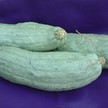Tried them for 5 years and same results every year with them.
I have had similar problems with squash. Some years worse than others. I just did a quick search for possible reason and this is what I found.
Plant Guide
L
LaLe
80735
Pink, banana-shaped fruit have a blue tip and weigh around 10lbs.
A smaller strain of Candy Roaster from northern Georgia. This type of squash is famous among the people of the southeast. Delicious, smooth orange flesh is perfect baked, fried and makes great pies; hard to find and quite beautiful. BAKER CREEK
Cucurbitaceae Cucurbita moschata
Save
Start Indoors and/or Transplant
Start Outdoors
JanFebMarAprMayJunJulAugSepOctNovDec
This is an example of the timeline you would see based on your growing conditions.

Black Rot
Xanthomonas campestris var campestris
There are several different diseases called “black rot” affecting different crops, but this bacterial disease is the most important for growers of Brassicas. It isn’t usually a big problem, but can affect plants at any stage and sometimes gets out of hand (usually in warm wet weather, when it can spread rapidly.)
Black rot commonly enters the plant through damage from insects and can spread from plant to plant quite easily. It first shows itself as yellowish V shaped lesions on the margins of the leaves. Affected areas slowly enlarge and darken as they dry out and leaves eventually die and drop off. The resulting leaf loss can eventually result in the plant becoming stunted. The inside of the stem usually shows dark streaks where the bacteria is present. This disease is sometimes confused with Fusarium wilt, but the characteristic V shaped lesions help to differentiate it (also symptoms start at the top, rather than at the bottom).
The best Black rot control methods are cultural. It can survive in plant debris, so be careful to remove and destroy infected plants (and any cruciferous weeds). Practice good hygiene and crop rotation and make sure leaves don’t stay wet for long periods. The disease is often transmitted by infected seed and if you suspect this you should treat them with hot water (122 deg F for 25 minutes) or bleach. If it is a big problem try to find a resistant cultivar.
Xanthomonas bacteria is that it is the source of xanthan gum, which is widely used as a food additive.
Image: David B. Langston, University of Georgia, Bugwood.org






























































 , I can say for certain it aint mild, in fact I think it is hotter than the cayenne I thought was to hot.
, I can say for certain it aint mild, in fact I think it is hotter than the cayenne I thought was to hot.




